

B-45C

The
B-45
Tornado holds a number of firsts. It was the first American
four
engine jet to fly, it was the first operational jet bomber to
be used
by the US Air Force, the first jet aircraft to be refueled in
the air
and it was the first jet bomber to drop a nuclear weapon. The
B-45 was
designed as a result of a War Department request in 1944 for a
family
of jet powered bombers which came about as a result of the
War Department's concern about the advances in German jet
technology.
In
September of 1944 a developmental contract was given to North
American
for three aircraft designated the XB-45. Three other
contractors were
given similar contracts, Convair for the XB-46, Boeing for the
XB-47
and Martin for the XB-48. As a result of the increasing
tensions with
the Soviet Union in 1946, the Air Force decided to forgo the
competition that would normally be held between the four
entries and
opted to review the designs to determine which one could be
produced
first. By mid 1946 the XB-45 and XB-46 were nearing completion
but the
XB-47 and XB-48 were still at least two years away. The Air
Force
concluded that the XB-46 would likely be inferior in
performance and
that its thin fuselage would not be able to hold all of the
required
radar equipment. As a result a contract was signed to produce
96
B-45A's in January of 1947. The first XB-45 made its maiden
flight in
March of 1947. The three XB-45's produced flew a total of 131
test
flights with the loss of one aircraft killing the crew of two.
The
other two were eventually turned over to the Air Force.
The
B-45A, the first
production B-45
flew in February of 1948 and differed for the XB-45 in having
improved
ejection seats and communications equipment, an E-4 autopilot
and a
bombing navigation radar. The first batch of 22 was powered by
J35
turbojets and was not considered combat ready and was assigned
to
training duties. The next batch was equipped with J47
turbojets. The
first B-45A's entered service in November of 1948 with the 47th
Bombardment Group. The initial order of 96 planes was
completed in
March of 1950. At the outbreak of the Korean War it was
decided to
convert the B-45A to a tactical nuclear bomber. The B-45 could
not
carry the early nuclear weapons due to their large size and
even with
the development of smaller bombs, the aircraft required
extensive
modifications. Fifty-five nuclear capable B-45's arrived in
the United
Kingdom in 1952. These were equipped with a 1200-gallon fuel
tank in
the aft bomb bay and despite technical problems was the USAF's
first
line
deterrent in Europe.
The
B-45B was a
proposed variant of the A model with improved radar and fire
control
systems. None were built.
The
B-45C was the first
jet aircraft
capable of aerial refueling. It carried two 1200 gallon
wingtip fuel
tanks, had a strengthened canopy and an in flight refueling
receptacle.
The first B-45C was flown in May of 1949. Only ten were built
and the
remaining 33 under construction were converted to RB-45C's. On
the
RB-45C the bombardiers canopy was faired over and replaced
with an
oblique camera system. The RB-45C first flew in April of 1950
with the
last one being delivered in October of 1951. RB-45C's flew
with SAC
during the Korean War, as B-29's could no longer fly these
missions
safely. They flew many missions until early in 1952, when they
were
converted to night operations. Their service ended shortly
there after.
RB-45C's also flew several long-range missions over the Soviet
Union
during the middle 50's. On July 29, 1952, an RB-45C made the
first
non-stop Trans-Pacific flight, having been refueled twice by
KB-29's
along the way. By 1959 the RB-45C had been replaced by the
RB-47E.
The Kit
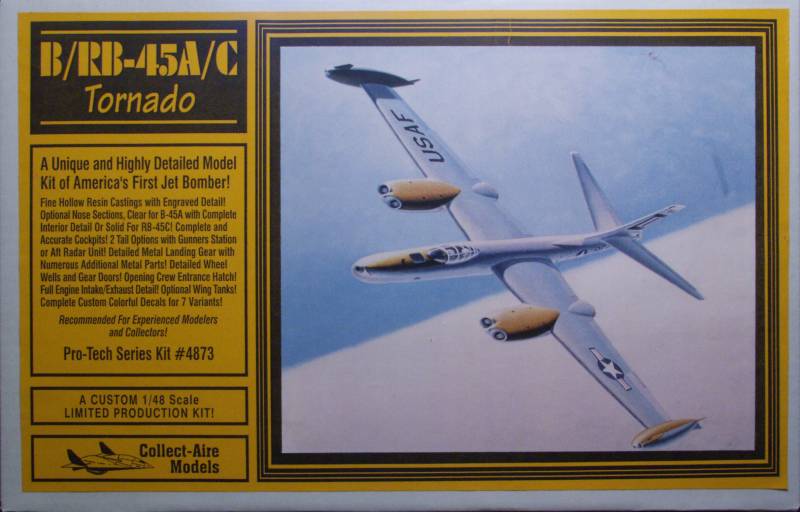
Collect-Aire was a cottage industry type business that specialized in a variety of subjects that the main stream manufacturers tended to ignore. Their kits and conversion sets were primarily resin. Their kits also have a reputation of being hard to build, especially some of their early kits. Their later kits, which this kit is one, are better as kits of this type go. Collect-Aire shut down a couple years ago so this kit is only available on the used market and maybe rather expensive.
The Collect-Aire B-45 comes in a fairly large hinge top type box and the entire box is corrugated cardboard. Inside the contents is well packed to protect the resin parts. The fuselage halves were taped together and did not show any signs of warping or twisting. The are no casting blocks to be removed, just some light flash. The wings which are solid castings were also taped together and they appeared to be free of warps and twists and also have no casting sprues to be removed but there were some spots of excess resin near the wing tips that will need to be cleaned up. Every thing else was separated in zip lock bags. The fuselage halves, shown immediately below are impressive castings and feature recessed panel lines, finer than those on many injection molded kits. These are for the most part fairly uniform but there were a few places where they nearly fade away and one may want to scribe some of these a bit deeper as they may tend to disappear under your finish. I found no casting flaws on the exterior of these parts. I would recommend that if you do not intend to build your kit near term that you replace the factory masking tape as it tends to deteriorate rather quickly.
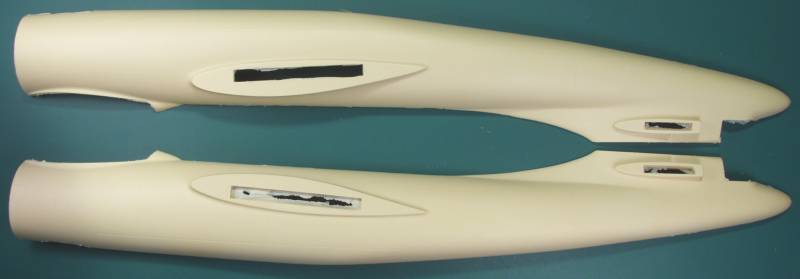
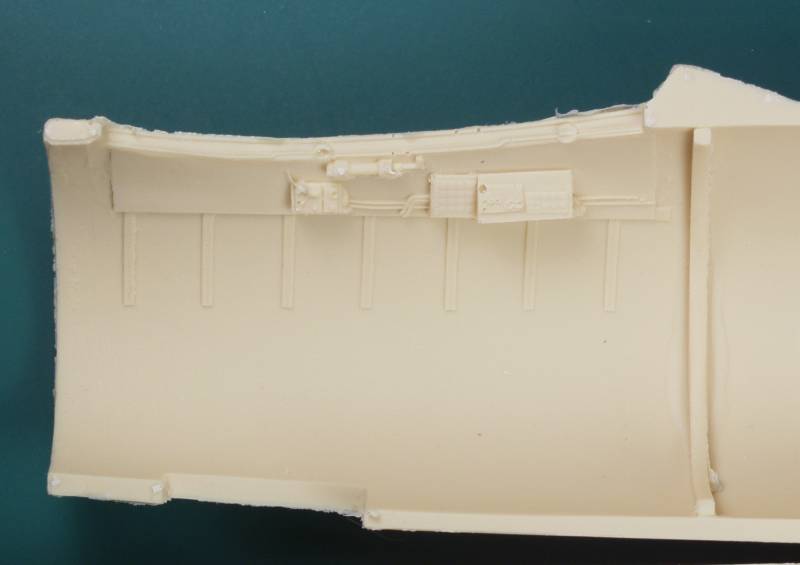
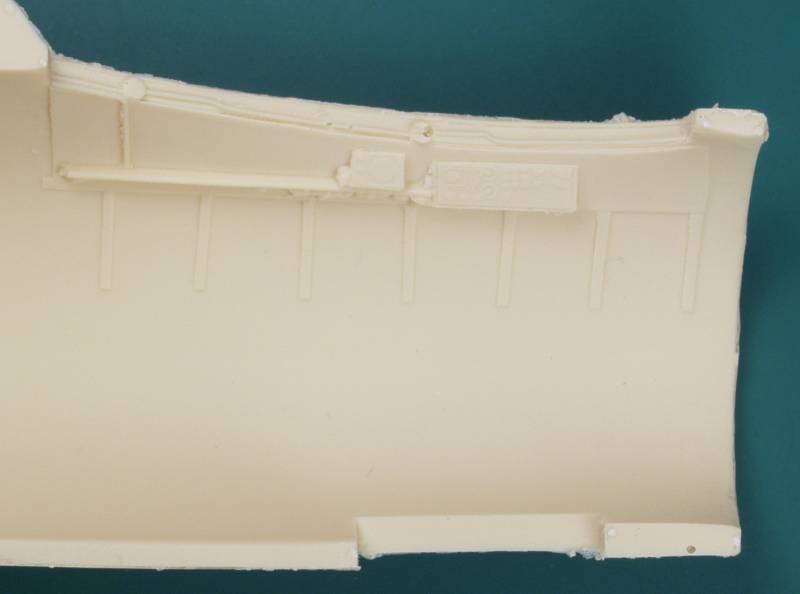
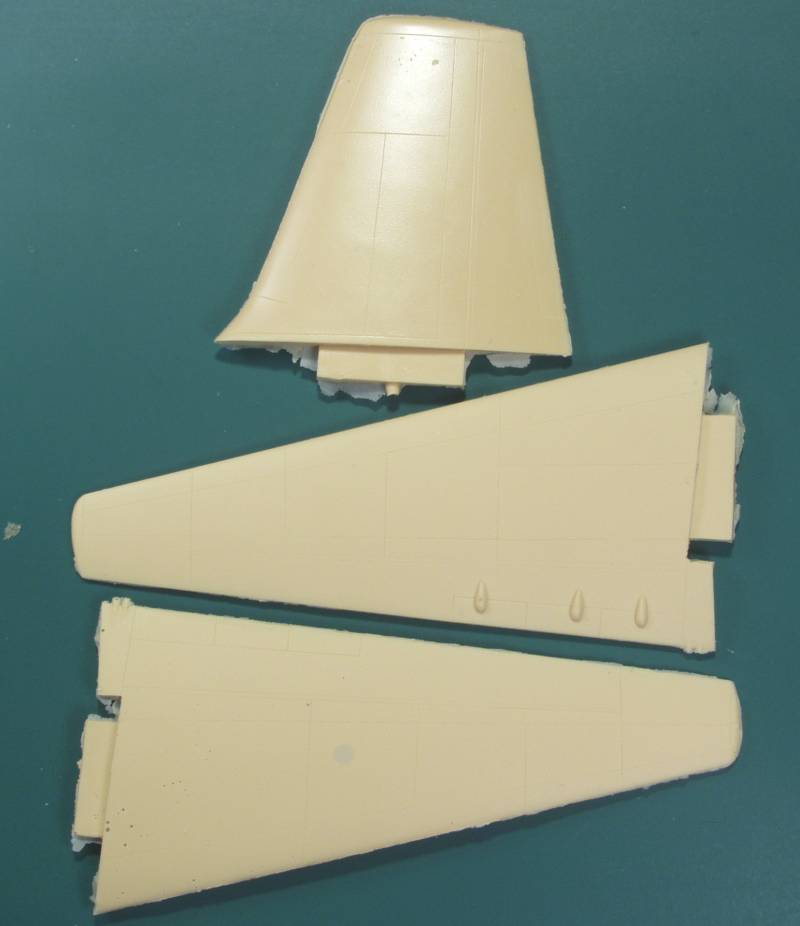
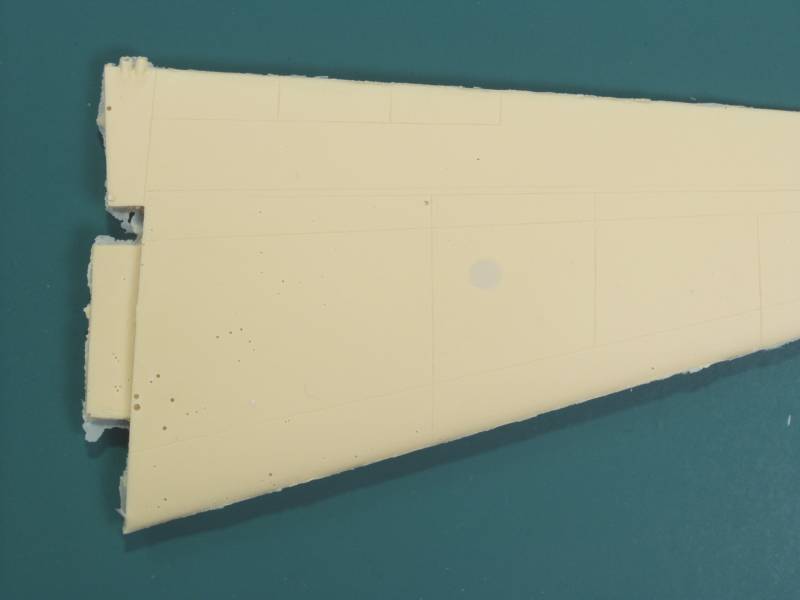
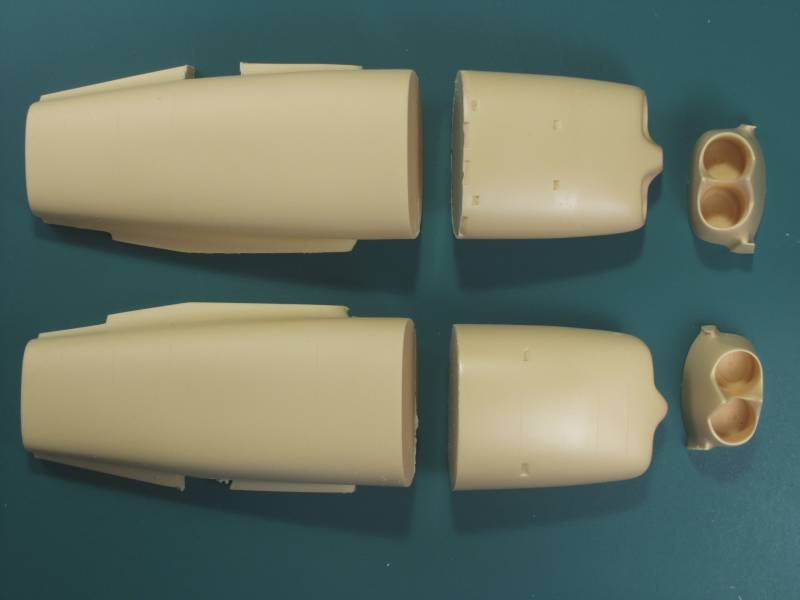
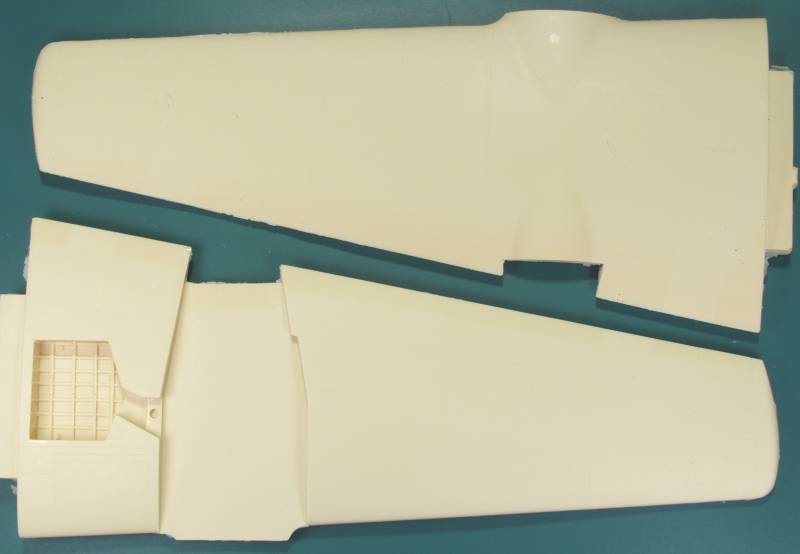
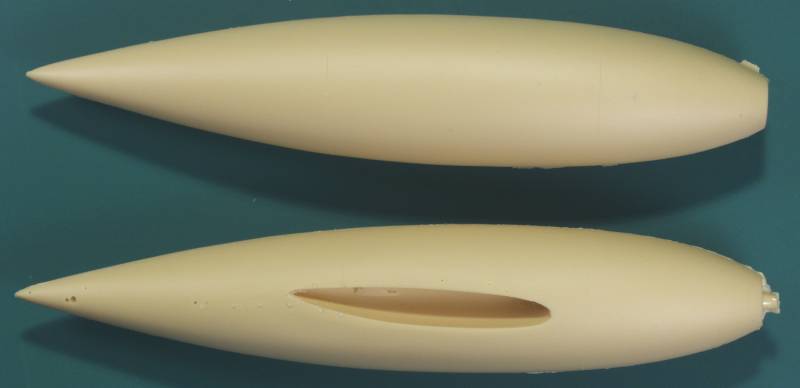
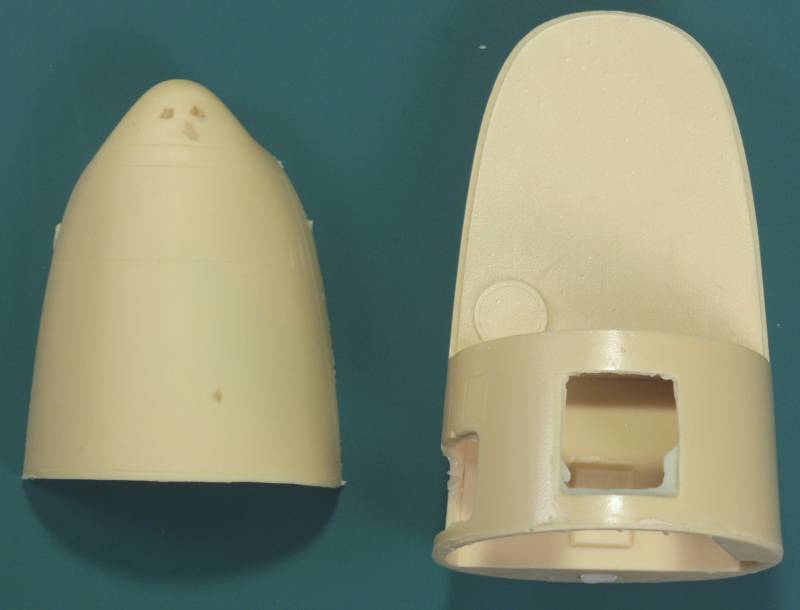
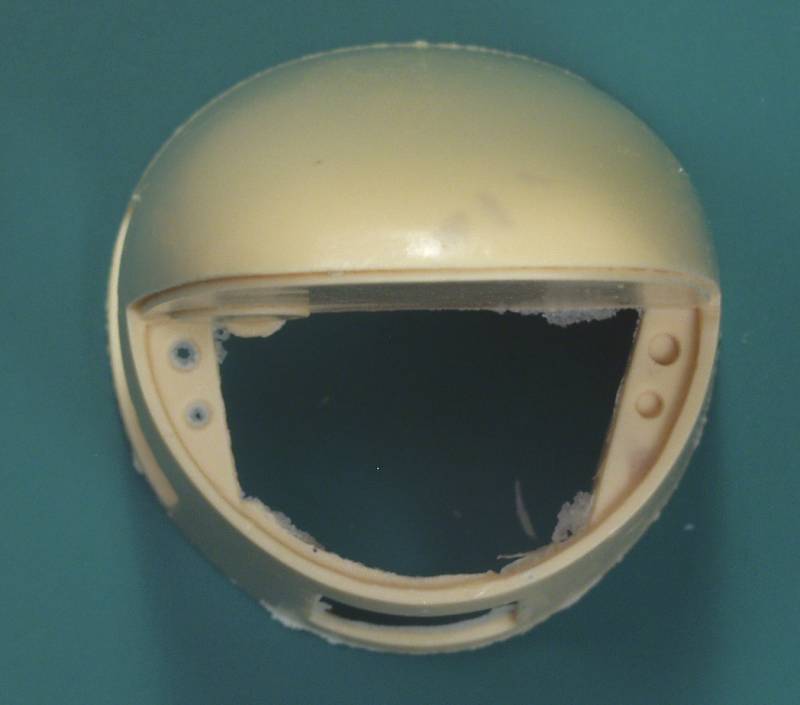
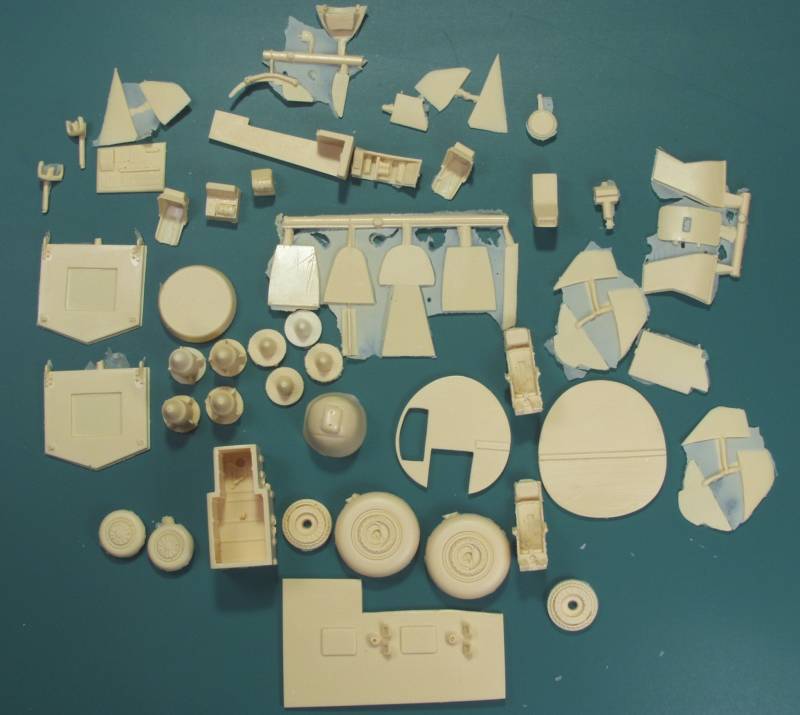
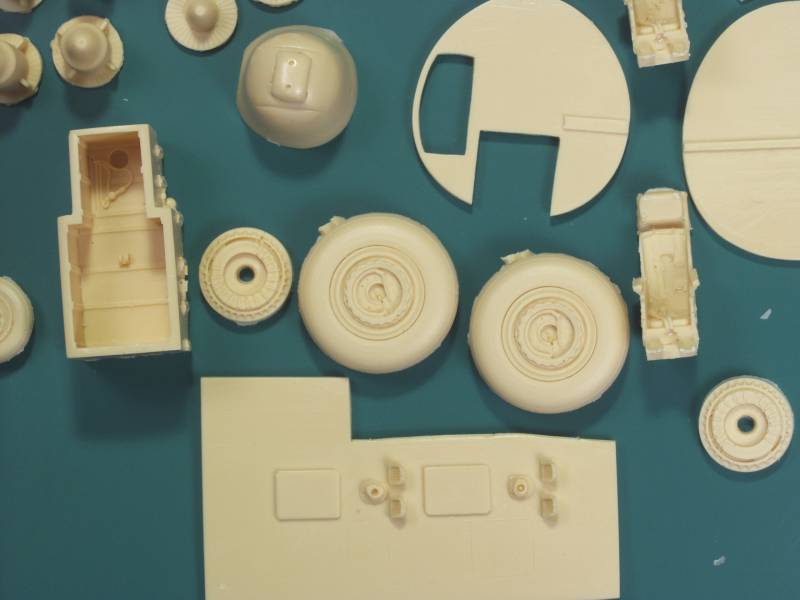
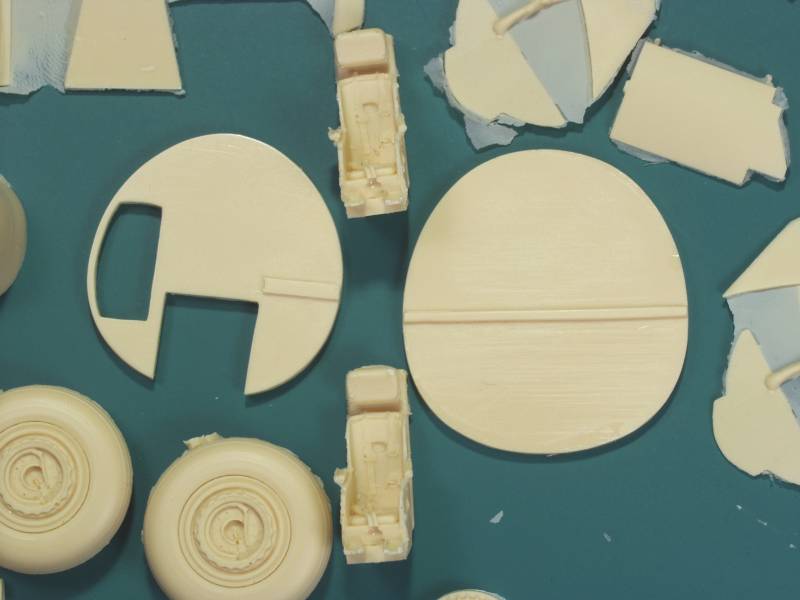
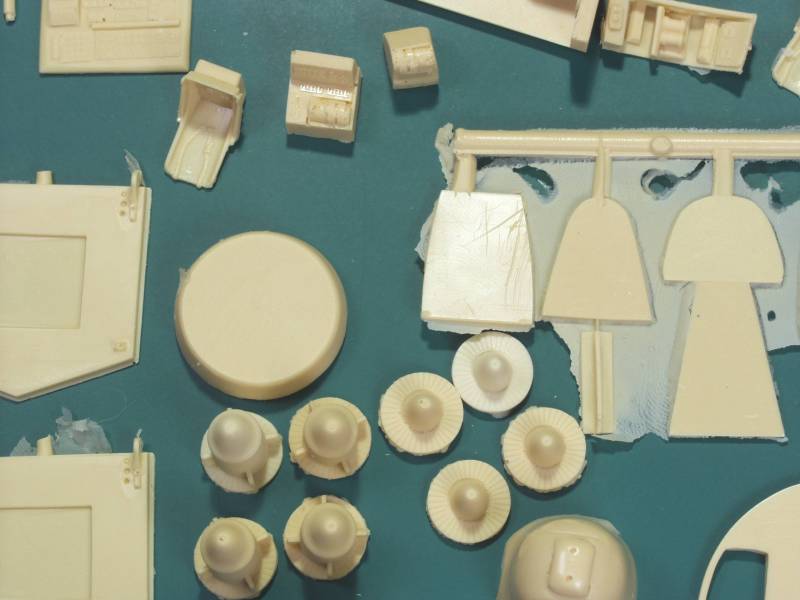
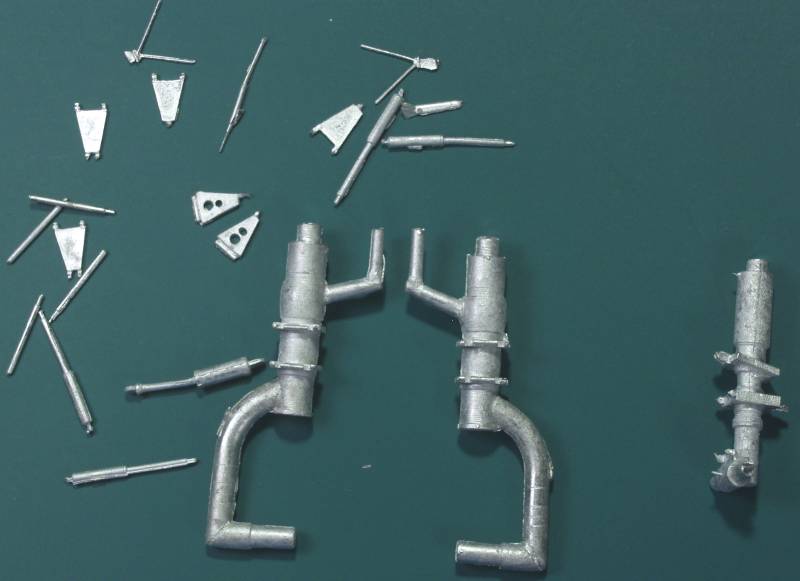
The clear parts are vacuformed and are quite clear however the frames detail is a bit soft but should look OK when painted. You get two of each in case one come to grief. The balance of the clear parts include two different styles of gunners station and a camera glazing.
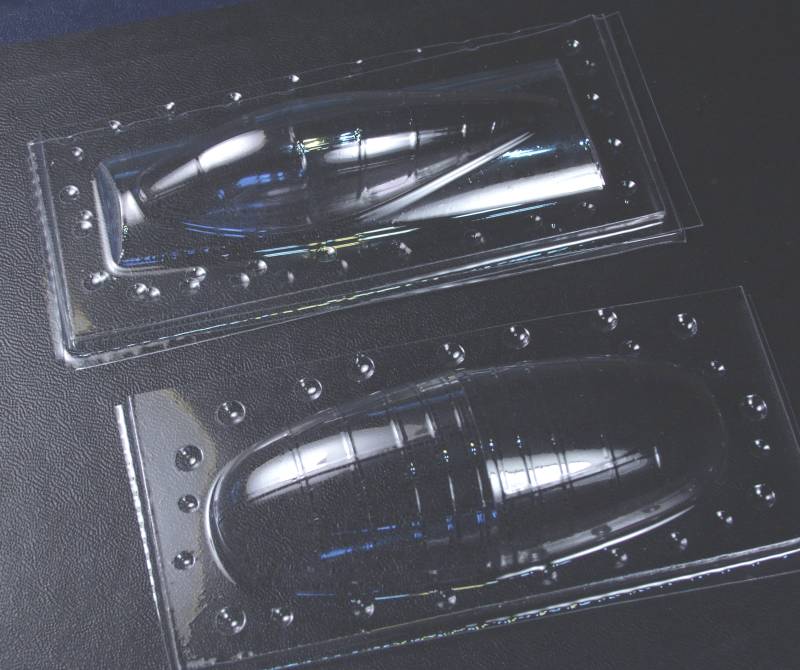
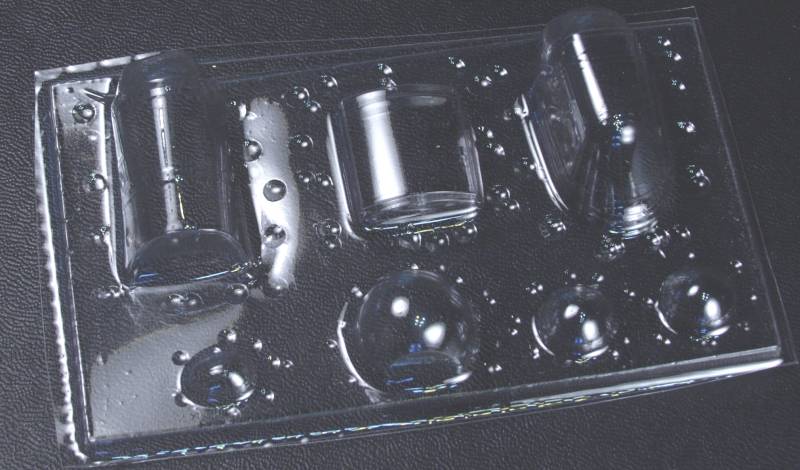
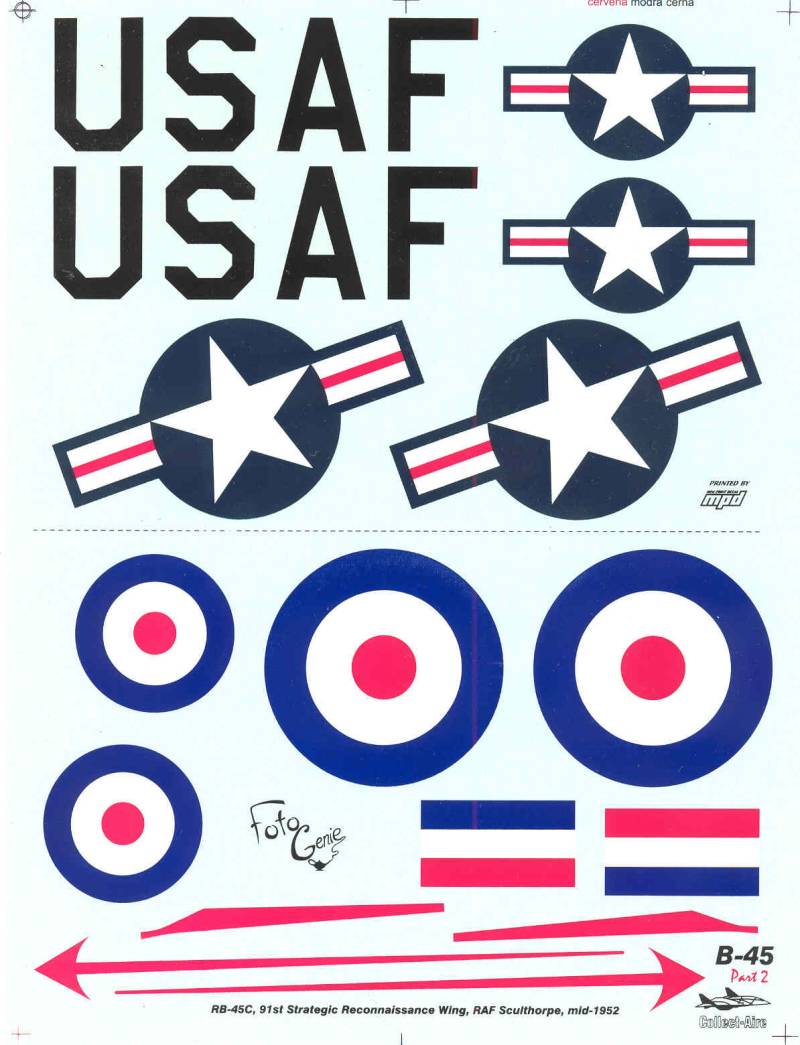
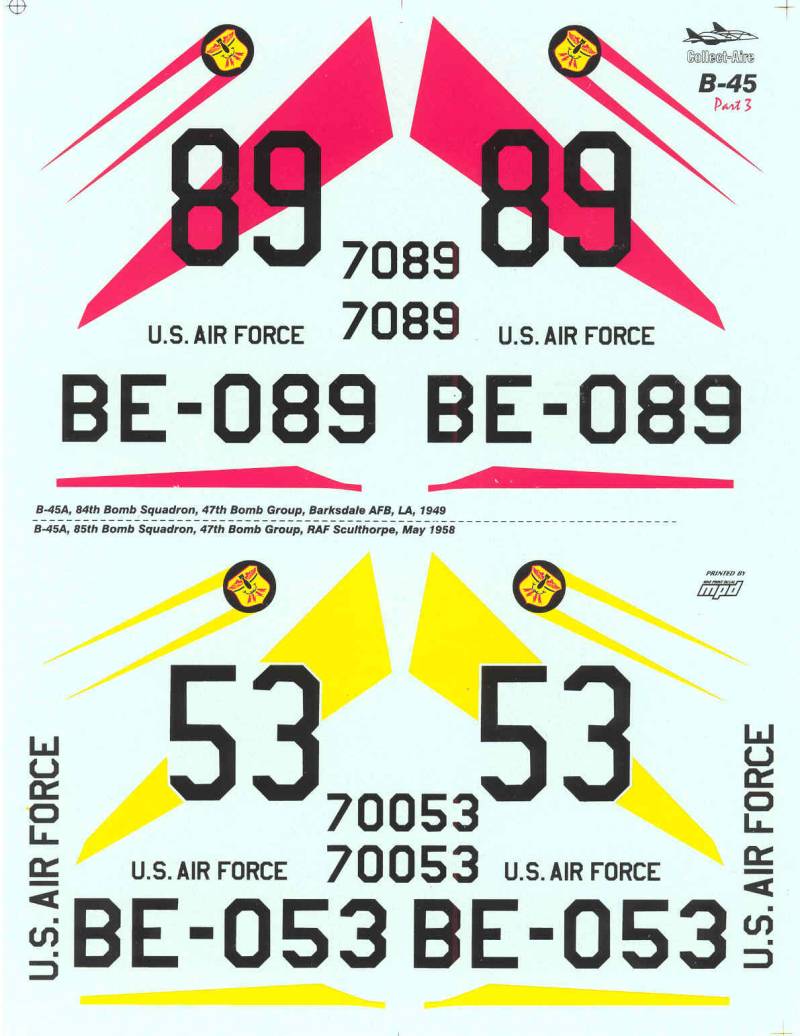
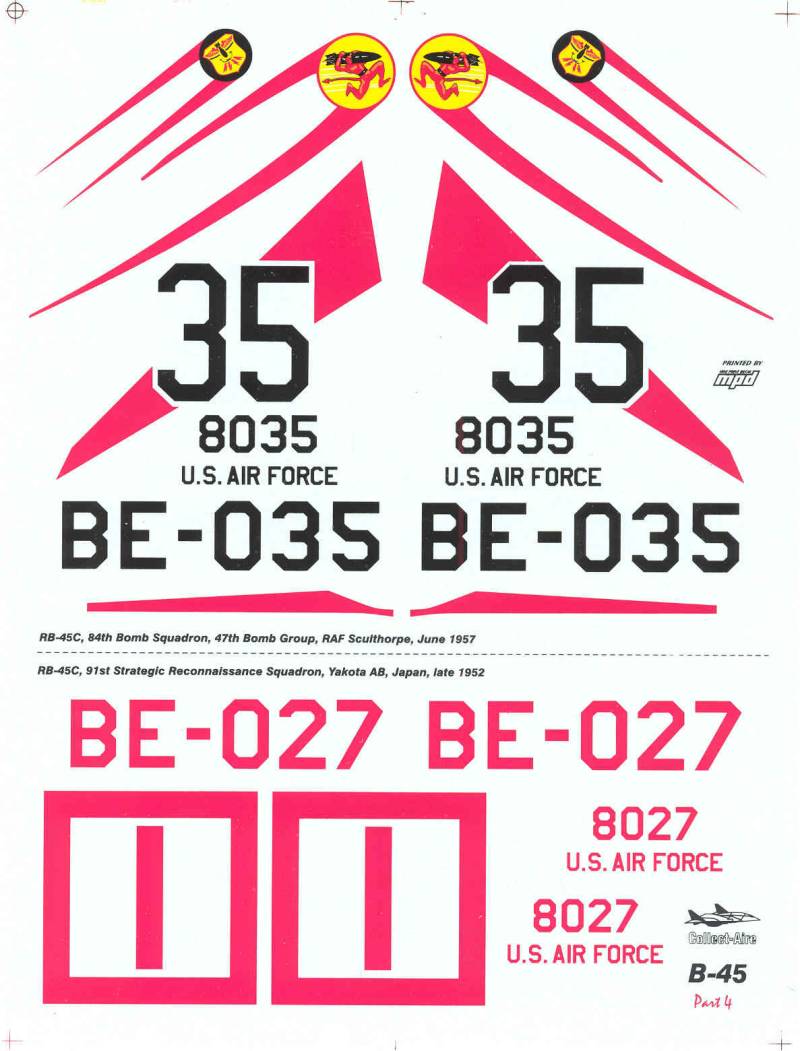
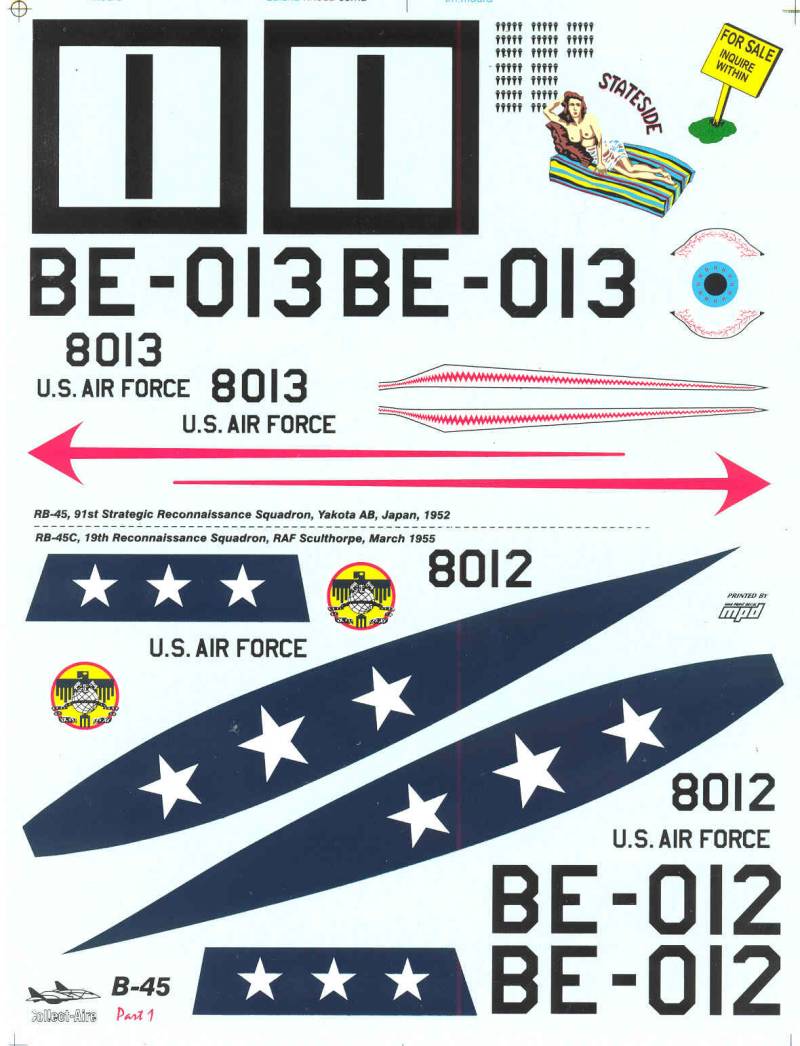
Links to kit build or reviews
None
that I have found.
References
There is no definitive book that I could find but there are some on line sources of information and photographs at the following links... here and here.
Back to the Post WWII Jets page
Updated 9/20/14